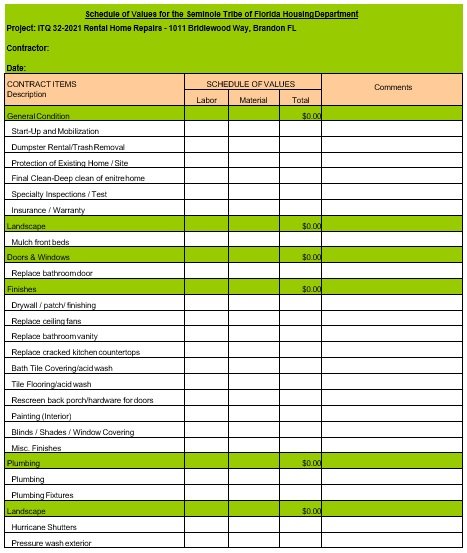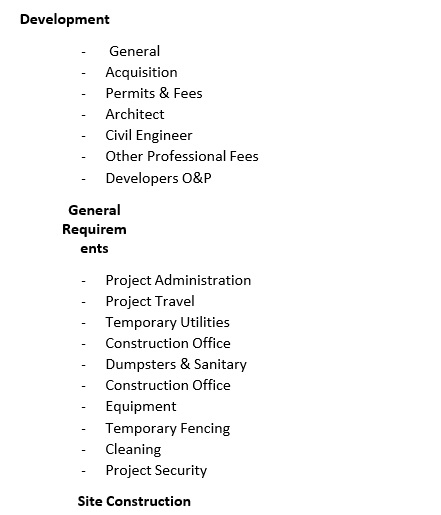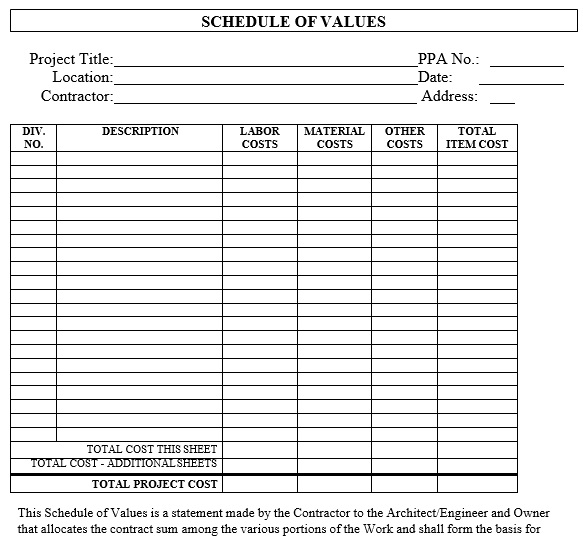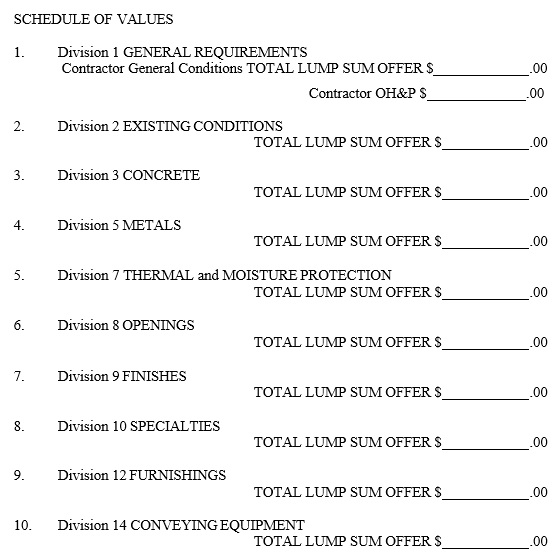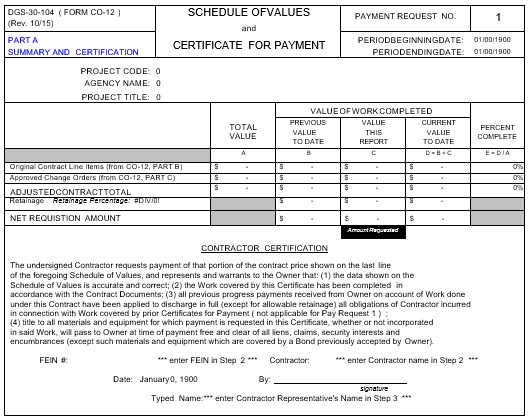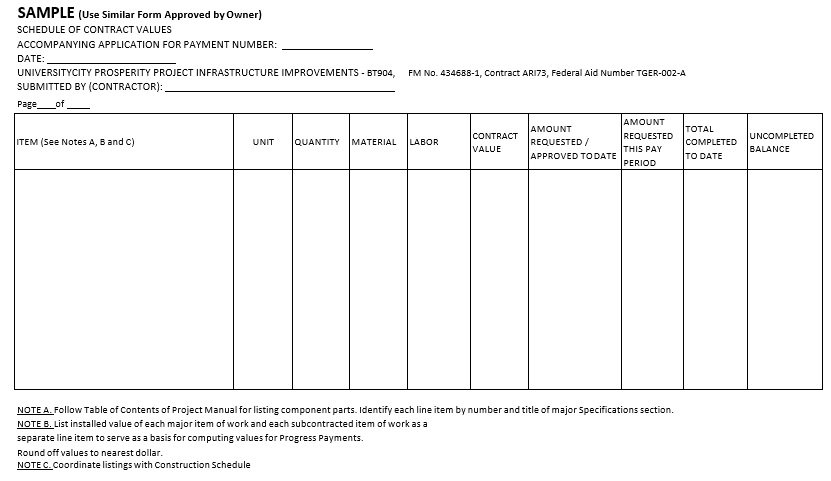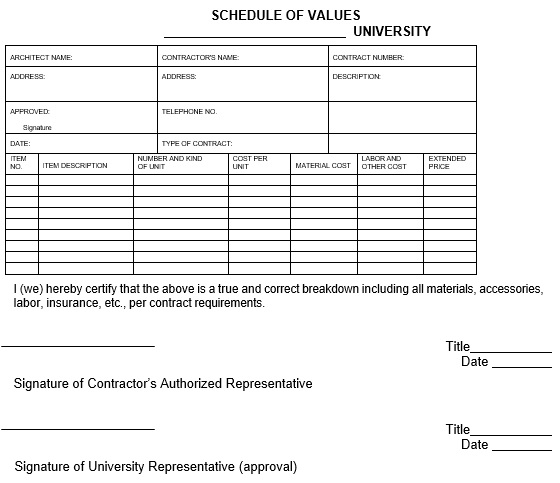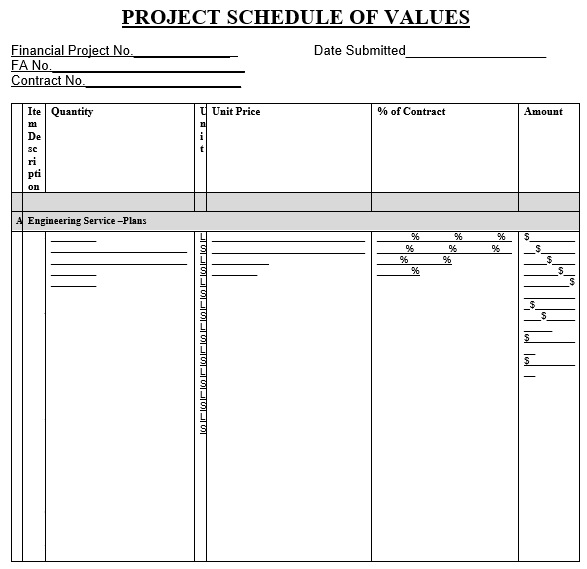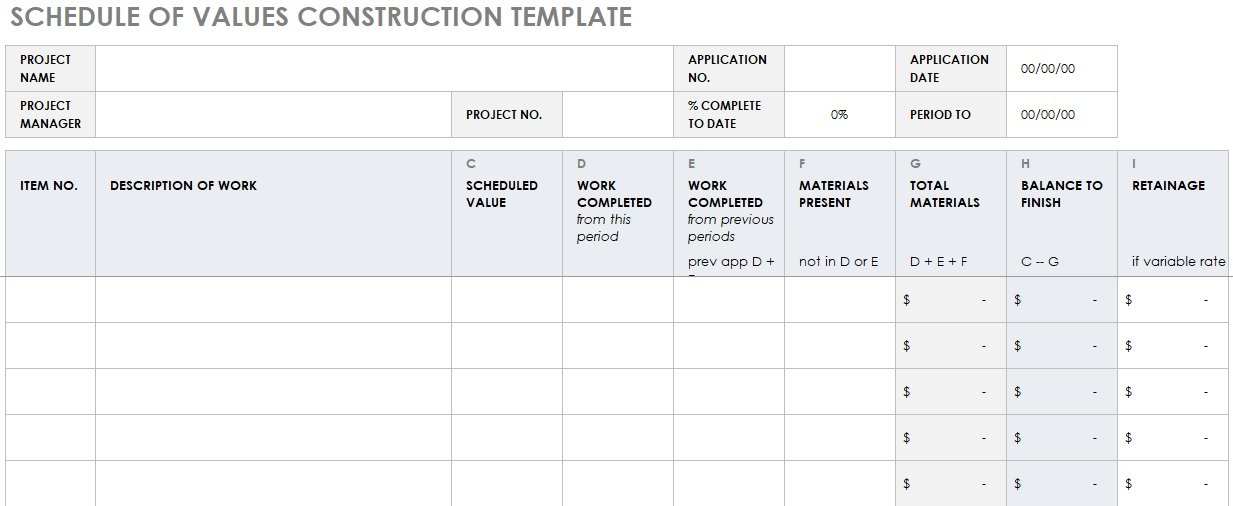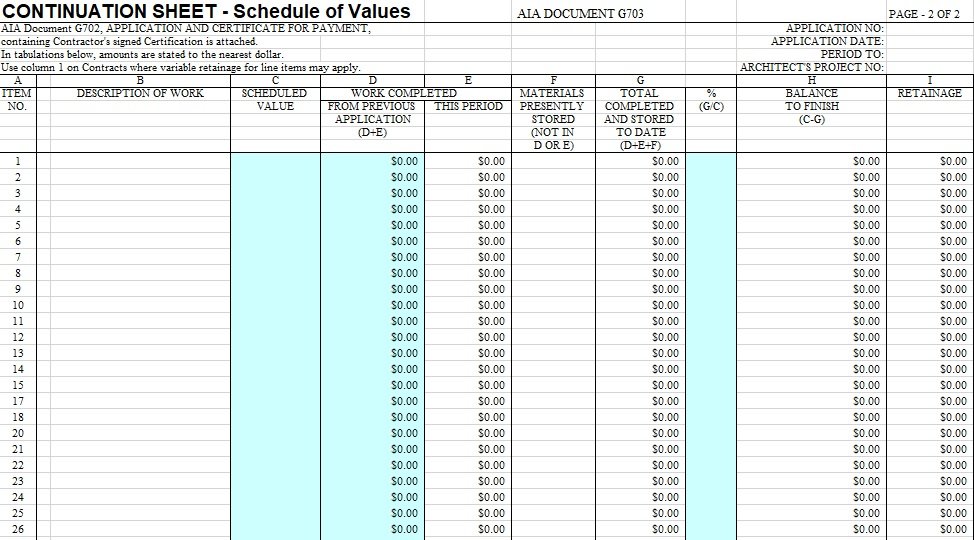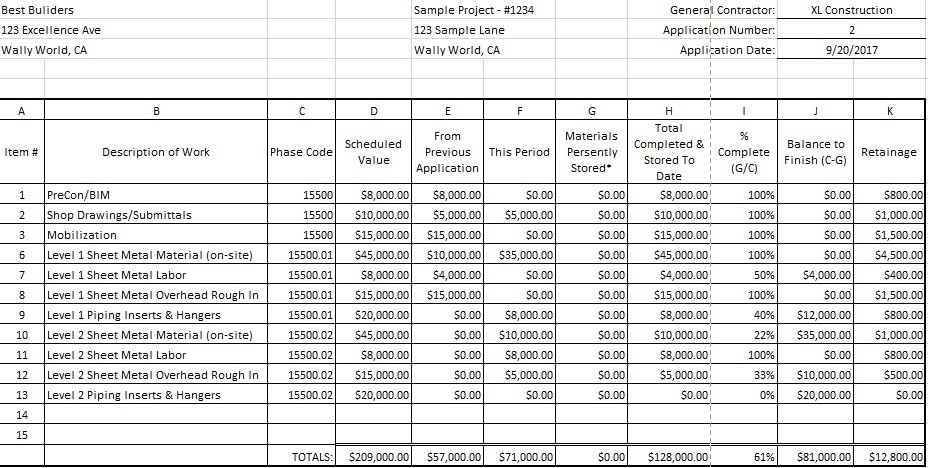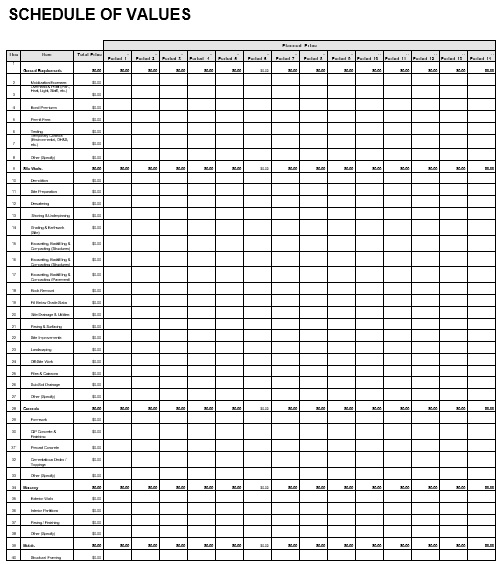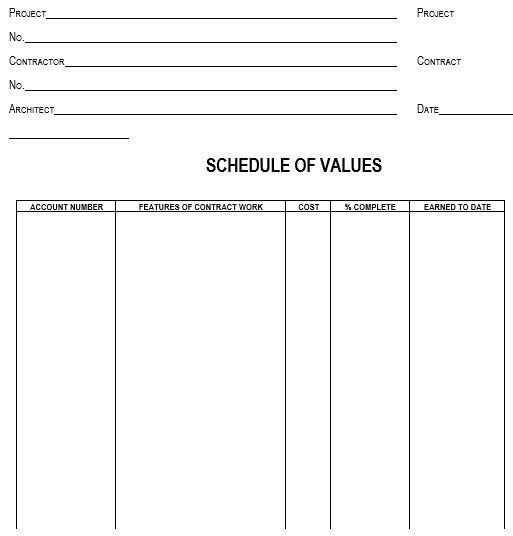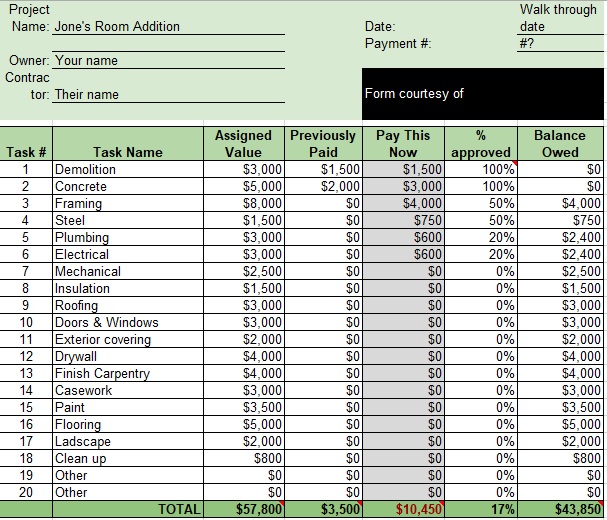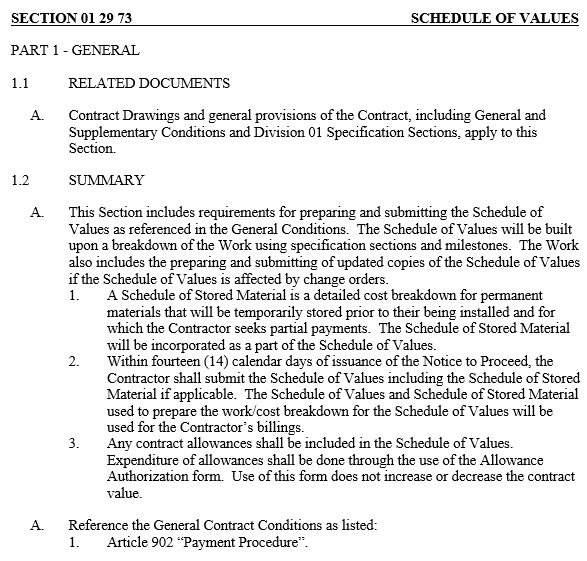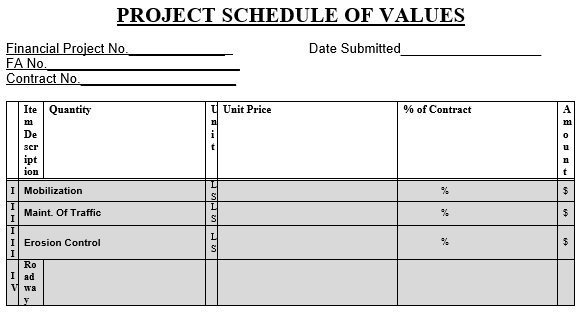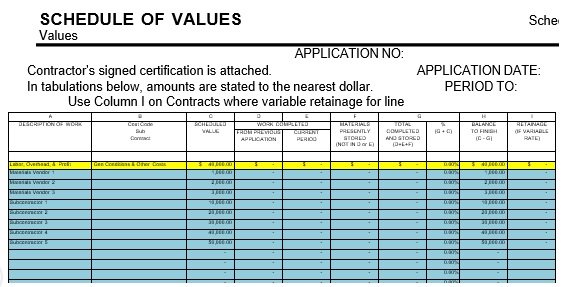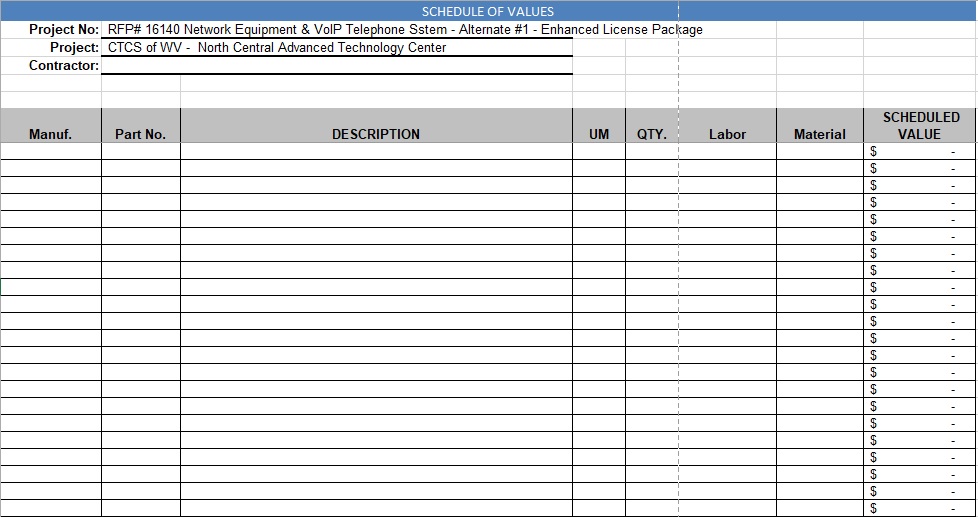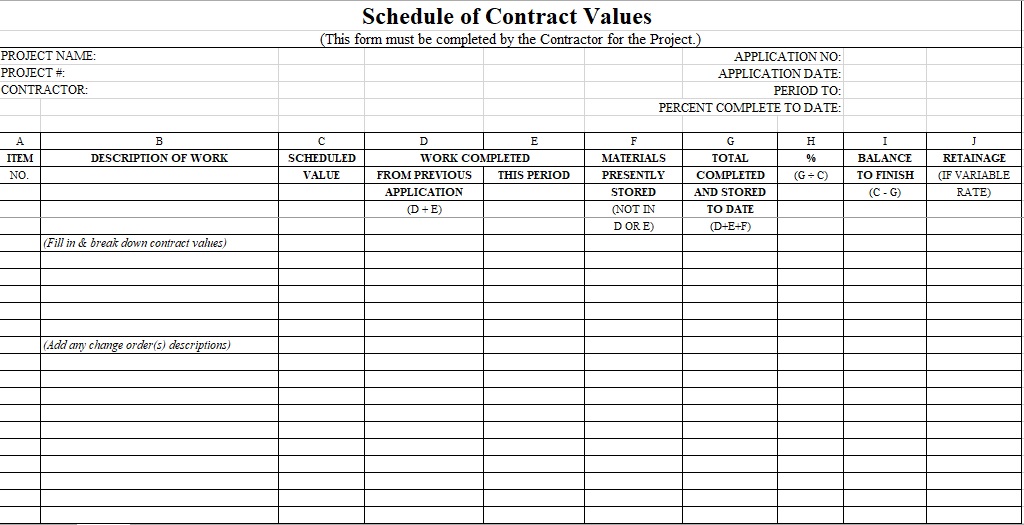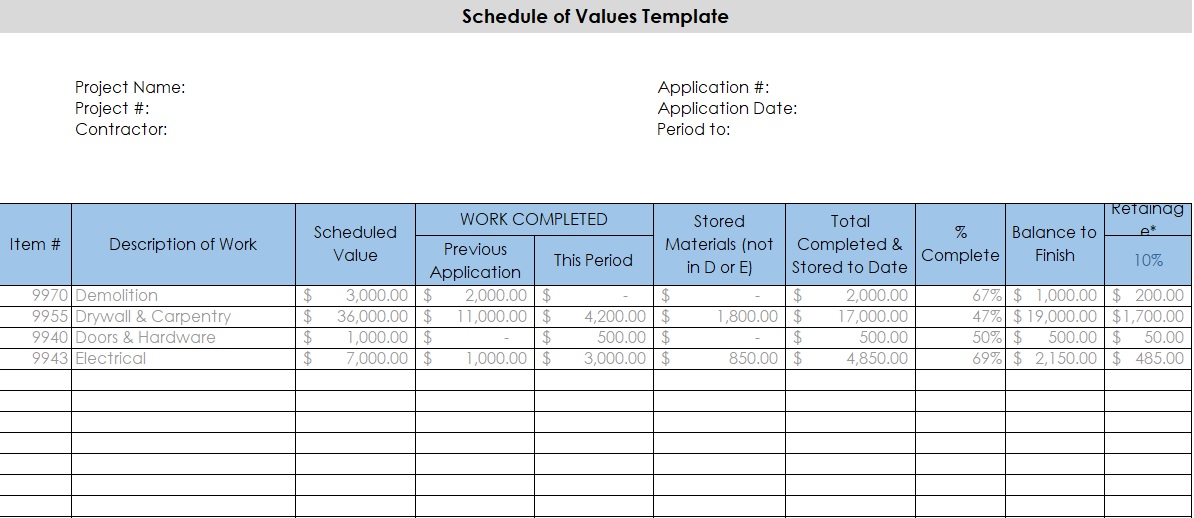A schedule of values template is a document that includes the cost of each phase of the project. It also contains finer details such as the kind of work, things to be done, and the time within which it must be done. After adding all the work items together, you have the exact cost of the entire project.
Table of Contents
- 1 What to include in a schedule of values?
- 2 The importance of a schedule of values:
- 3 When to use a schedule of values?
- 4 How to fill a schedule of values?
- 4.1 The item’s number:
- 4.2 Enter details of work:
- 4.3 Enter the values:
- 4.4 Fill in the details of work completed:
- 4.5 Fill in the values of the current phase:
- 4.6 Stored materials for non-completed work:
- 4.7 For completed work, fill in the total value of material stored:
- 4.8 Calculate and enter the percentage:
- 4.9 Calculate and enter balance to finish:
- 4.10 Calculate and enter the Retainage percentage:
- 5 What are the benefits of using a schedule of value?
- 6 Conclusion:
- 7 Faqs (Frequently Asked Questions)
What to include in a schedule of values?
Without money, no construction project can run. A construction schedule of values is used by project engineers and architectural designers to measure the projected cost of a project against the quoted value.
The project could easily run out of cash and stall without the schedule of values. Moreover, the schedule of values breaks down the whole project cost into bits. This indicates project costs in phases and the items involved in each phase. When a project phase is completed then the project managers can do the following tasks;
- Measure the cost incurred in that phase
- Make the necessary payments
- To keep the project progressing, check if the balance at hand shall be able
However, the large projects in most cases are paid in phases. The contract should include the following details in the schedule of values to make sure a smooth progression of any construction project;
The head:
At the top of the schedule of values, there is the head that should include the following;
- The project’s name: this is usually assigned by the owner as contained in the contract document.
- Project number
- Contractor’s name
- Contract application number
- Contract application date
- Expected finishing period
The body:
This is the main part of the schedule of values that should include the following columns;
- Item number: For easy identification by the project managers, auditors, and engineers, each item of work must be numbered. In terms of the number of digits, the numbering could take any form. For instance, you can use three digits like 001, 002, 003, and so on. Also, you can use four digits like 5001, 5002, and so forth.
- Work description: Work description provides details of works expected to be carried out in every phase. This may include earthmoving works, piping and electrical installations, demolitions, and so on.
- Scheduled value: It includes the amount of money assigned to each item of work that covers the whole project. Depending on the amount of work involved, it can range from a few hundred dollars to thousands or ten thousand.
- Completed works: In measuring the amount spent against the projected budget, the project progresses by phases making the inclusion of completed works essential. The completed works column can further be divided into two columns i.e. the previous schedule of values and the current schedule of values.
- Materials in for non-completed work: For easy accountability, this item includes the value of materials in the project’s store. Non-completed work materials indicate the money that can be used in the current phase or in the next phase of the project.
- Materials in store for completed work: This column indicates the value of money that spent in all the previous phases of the project. You can use it to measure the progress of the project in terms of percentages.
- Percentage of completed items of work: This column shows how far the project has progressed. This column makes it easier to know the percentage of the remainder. It makes the project owner and contractor able to calculate the amount of time left to the project completion.
- Balance to finish: it indicates the amount of money required until the completion of the project.
- Retainage: until the project is complete, this is the amount of money held back as an incentive to the contractor.
- Totals: As its name implies, it shows the total of each of the above-discussed items.
The importance of a schedule of values:
In the life of a project, a smooth cash flow is essential. A schedule of values provides a quick overview of the budget expenditure against the total allocation to the project owner and engineers. They can manage their bills effectively by getting a quick overview. Furthermore, they can easily determine what has been spent in the completed project phase and what to assign for the current phase.
When to use a schedule of values?
A schedule of values is used by the contractors who are engaged in commercial or extensive and multi-step residential jobs. The primary cause for costly delays and cost overruns is bad communication and coordination. Also, a lot of time and money get lost due to lack of transparency and communication. But with the help of SOV, you can avoid these risks. An effective communication is facilitated by having a well thought out SOV. It makes sure transparency and indicates efficiency.
How to fill a schedule of values?
Let us discuss step-by-step how to fill a schedule of values;
The item’s number:
Without following the numbers in a serialized way, fill in the numbers allocated to each item. You can offer an item such as;
- laying of foundation number 001
- excavation number 002
- electrical works number 0555 and so on
Enter details of work:
According to the corresponding work number, provide the work details. In order to make sure that there is no confusion on the amount allocated for each item, each item of work must correspond with the item number.
Enter the values:
The amount each item is likely to consume in the whole project, the scheduled values are governed by it. The values in the schedule of values spreadsheet are assigned as per to the contract value.
Fill in the details of work completed:
In each phase, fill in your construction schedule of values upon the completion of work. This is equal the amount each work item consumed.
Fill in the values of the current phase:
Fill in the values as zero if the excavation work and foundation lying are fully complete. Then, in the next row, allocate the values for the current phase.
Stored materials for non-completed work:
Measure the value of the material in the store for work that is ongoing in this column. It will assist you in knowing the quantity to order to avoid wastage.
For completed work, fill in the total value of material stored:
This value is achieved by adding the amount in the previous phase, in the current phase, and the value of stored material for non-completed work.
Calculate and enter the percentage:
Indicate the percentage of completed work against each item of work.
Calculate and enter balance to finish:
In the schedule of values form, the balance to finish is calculated by taking difference of the total scheduled value and the total amount spent to date.
Calculate and enter the Retainage percentage:
You can calculate it by taking the value of the total completed stored to date x 10%.
What are the benefits of using a schedule of value?
Here are some benefits of using a schedule of value;
Assists you in organizing and maintaining order
Before the commencement of your construction project, using a schedule of value tool allows you to visualize the processes and expected outcomes of the contract. This document acts as a map guide for the clients, individuals, and the people who are responsible for creating the project plan.
Establish trust and maintain accountability
A trust relationship is developed between the client and project manager by having an SOV. All the costs, processes, and estimated timelines that are associated with the project described by this document. The client and contractor can enhance the likelihood of completing the project by specifying these details.
It becomes easier to collect payment
Contractors can easily collect payments by using an SOV. Both client and contractor by having SOV can record the percentage of work done and the necessary payment dates.
Keeps the whole team on track
Everyone gets a clear understanding of their individual goals and responsibilities by having a copy of the SOV on the site. This document assists the team in obtaining the project’s large-scale objectives within particular timelines.
Conclusion:
In conclusion, a schedule of values template is used by the project owner and engineers. It assists them in getting a quick overview of the budget expenditure against the total allocation. This document breaks down the entire project cost into bits.
Faqs (Frequently Asked Questions)
A schedule of values can be used by prime or general contractors and second-tier subcontractors for supporting their payment application. The project owners and architects also use it for verifying the work done and releasing payment.
The project’s location has no effect on the schedule of values. You can modify it according to the requirements of the owner, architect, or general contractor. Variations generally depend on the usage of the contract and the level of information requested.

